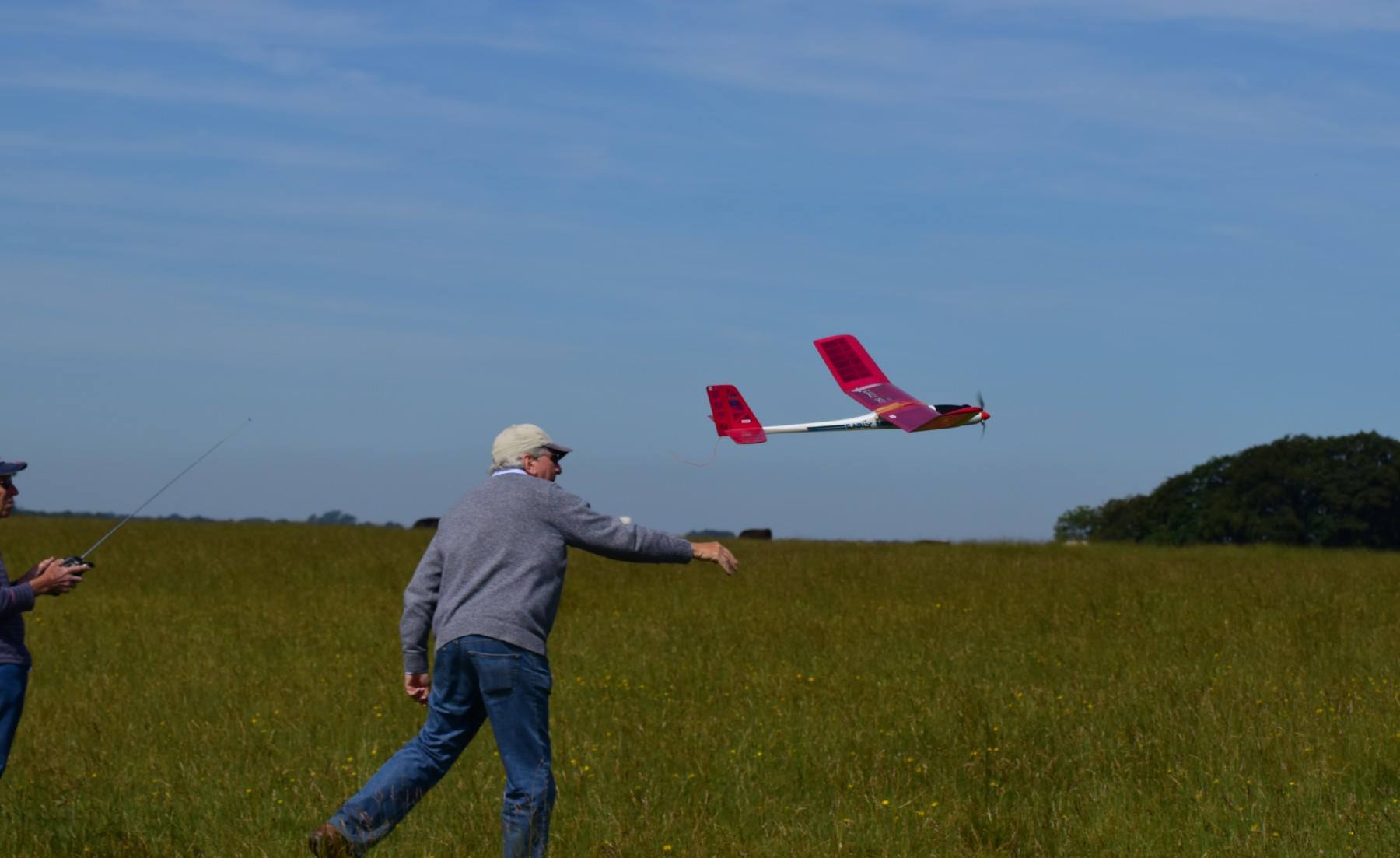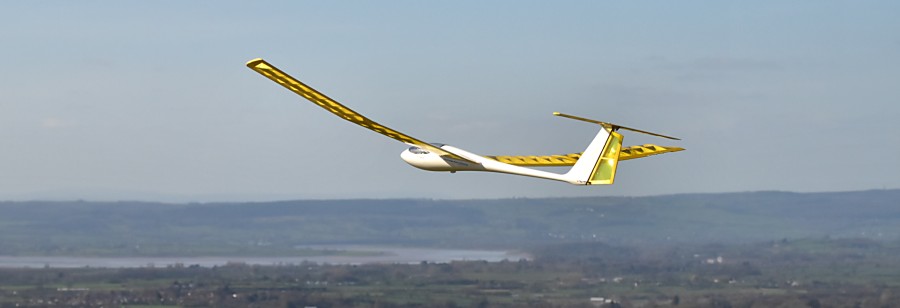South Cotswold Soaring Association: Advice
|
Beginning Radio Controlled GlidingWhen stood on one of the local hills watching a beautiful, scale glider soaring and performing graceful aerobatics, it must be very tempting to think “I’d like one of those...” Perhaps, the interested spectator has even ventured to speak to one of the pilots - who aren’t currently flying - what the likely cost is ? Unfortunately, it’s one of those ‘how long is a piece of string’ questions... In the world of model power flying, the initial dream is often to fly something like a WW11 Spitfire...in the hands of an inexperienced novice, this is probably the worst initial choice and is most likely to end in an expensive disaster. Why is this ? Well, just like the scale glider mentioned above, they are designed to be flown by experts with many years experience...that is to say, when something goes wrong (as it often will) these guys don’t have to think what to do – their automatic reflexes, knowledge and experience just cut straight-in and they do it ! So, just what is the beginner to do ? Well, there are two basic choices : 1. Join a club and get the benefit of their experience. You may also be able to pick up a ready-proven model, radio etc at a bargain price. Most clubs will often include /arrange insurance as part of their annual membership fee. (Note: a 3 lb model travelling at 90mph can do a lot of damage !!). 2. Go it alone. Many do - starting at the local park /recreation ground or similar, perhaps with a parent giving help and encouragement. If the right model is chosen as a starting point, a measure of success may be possible....the risks of damage are still there though and, bye-and-large, many will give up after initial difficulties. Initial difficulties. You need time to THINK. Many models demand a near instant response. Before you know it - it’s heading for the ground, a tree or (perish the thought) an innocent by-stander... Orientation:‘left’ and ‘right’ become reversed when the model is coming towards you. It’s easier when the model is flying away from you, but, sooner or later it must be brought back ! Having a club member alongside you to grab the transmitter, can save the day. (You can also have a ‘buddy box’ system whereby they press a button on their transmitter and take control from you that way).Weather – wind, sun, visibility etc can all affect your flying in some way. Indeed, when slope soaring on a hill-side, the wind is often your only means of staying up. You have to learn how best to use that energy and how to ‘lose it’ in a controlled way when it’s time to land. Concentration |
Model Choice:Something with a reasonable wing span and moderate dihedral (slight V-shape when viewed from the front) – perhaps 4-6 feet (1220-1830 mm) should give good stability. Controls:rudder and elevator are fine to start with. A model which offers a different, flatter, wing as well (with ailerons) will allow you to progress to simple aerobatics when the basics have been mastered.Balance:the model should balance – fore and aft – at the point shown on the plan. If you don’t have a reference point for this, 33 to 40% back from the leading edge of the wing would be a good place to begin tests. If in doubt, add a bit of nose weight – you can always take a little off bit-by-bit. more info |
 |
Warps:
all flying surfaces (and fuselages) should be free from warps and unwanted twists. The exception here is a gentle wing tip twist which should be the same both sides...this is to make the model nicer to handle near the stall. Gentle heating and holding the surface opposite the twist should be all that’s necessary to effect a cure. If in doubt, get an experienced modeller to check it over for you.Early Flights and Experiences
There’s a lot to be said for the use of modern materials – EPP etc. They can soak up an enormous amount of punishment and still be flyable. The slight snag is that these models tend to be rather smaller, more ‘twitchy’ and can be rather too much for an absolute beginner. They can be quite quick to put together and repair though.
On the other hand, there is much satisfaction to be had from building a model from a kit or plan (the ‘old-fashioned’ way) and watching your handwork take to the blue. This method will take longer but, will allow you time to learn the future skills to tackle that big, impressive scale job.
Dave Cooper SCSA 27/02/19
